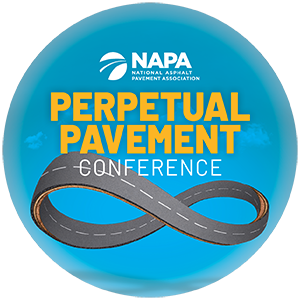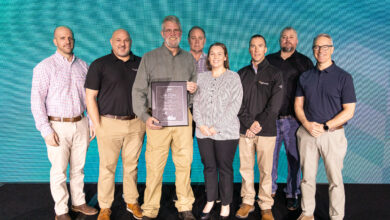Perpetual pavements on the Illinois Tollway
After a decade-long hiatus, the Perpetual Pavement Conference is back!
The multi-day exploration of long-lasting pavement design will be held Oct. 28-30 at the Omni Louisville in Kentucky. Speakers will present on a variety of pavement design approaches and research from across the country.
Register now to attend the 2024 Perpetual Pavement Conference.
Ross Bentsen will present on his topic, Balanced Mix Designs for Illinois Tollway Perpetual Pavements, in the afternoon on Oct. 29.
Bentsen and the Illinois Tollway shed some light on its work on perpetual pavements in the following Q&A:
Were there any memorable takeaways from previous Perpetual Pavement Conferences that informed your work?
The previous PPCs helped the Illinois Tollway confirm that a long-lasting asphalt pavement is a benefit to both the agency and the traveling public. When the Jane Addams Memorial Tollway (I-90) corridor was reaching time for reconstruction, asphalt pavement was one of several options evaluated for its replacement. The perpetual asphalt pavement was selected for several reasons – ease of construction, sustainability, flexibility in the construction work zone and both initial and long-term costs.
The use of an asphalt pavement also allowed the Illinois Tollway to try the various research options mentioned in the presentation – RAS, fractionated RAP and softer asphalt binders. The contractors were very interested in participating, knowing that innovations could help fuel changes to their practices and to other agency’s specifications.
What was it about the Jane Addams Memorial Tollway (I-90) Rebuilding and Widening Project that led to presenting at the PPC?
The primary reason is to highlight the successful performance of the asphalt pavement. It is always fun to highlight successes and there are several when it comes to the I-90 pavement.
The Illinois Tollway has a unique pavement structural design system for asphalt pavements, in which the design compaction level (Ndes) varies from the lower lifts to the SMA pavement surface. We are not aware of other agencies that use this type of design.
Additionally, the Illinois Tollway has always seen innovation and sustainability as two ways we can achieve the best performance of our pavements, while at the same time maximizing our resources. As part of its Building Green efforts, the Illinois Tollway seeks to minimize the environmental impact of roadway construction and maintenance by reducing, recycling and reusing materials such as asphalt shingles, tire rubber and reclaimed asphalt. The agency is committed to using innovative green technologies, as well as adapting research initiatives and best practices.
Giving the contractors options – the reclaimed materials that can be used; the binder grades; the various modified asphalt binder options for both dense-graded and SMA mixes – provides them the flexibility to determine what works best for their circumstances. This in turn helps the Illinois Tollway achieve its goals – long-term pavement performance in an economical setting.
This pavement was first placed in 2007-09. How has our understanding of perpetual pavements changed in the past 15 years?
One new understanding is that asphalt pavement thickness design has been evolving and thinner asphalt pavements have shown they can achieve the same perpetual performance. Thickness design systems, such as the Mechanistic Empirical Pavement Design Guide, are being calibrated by agencies have shown that thinner pavements, when designed correctly, are not only more economical, but also are acceptable with respect to long-term performance.
Another is how the construction and treatment of longitudinal joints has helped reduce the maintenance of perpetual pavements even further. Improving the construction details for longitudinal joints results in improved long-term performance of the asphalt pavement and minimized construction activities needed to maintain the pavement. We have new treatments that will be available to us when the typical requirement of a perpetual pavement – e.g., a simple mill-and-overlay of the asphalt surface – is performed.
The use of SMA & RAS/RAP in this project was pretty remarkable for its time and has led to the Tollway increasing the percentages of recycled materials in subsequent projects. What does this type of research mean for the future of balanced mix design?
One of the advantages of balanced mix design is allowing the contractors to evaluate options for their mixtures. The agency provides the performance parameters for the mix design and the contractors can evaluate the options available to them to meet the specification requirements. This project helped the Tollway evaluate the options and the mixtures proposed as part of the mix design. Since then, the balanced mix designs used by the Tollway have evolved allowing the Tollway to tailor our specifications to align with updated test procedures developed by the industry, while continuing to provide more options for contractors to develop well-performing, yet economical, mixtures. For agencies just beginning their journey into balanced mix design, we present this information as another piece of the puzzle that they can use in evaluating their specifications.





